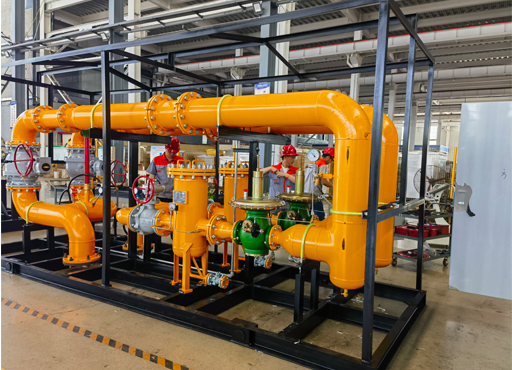
Dec . 21, 2024 01:32
Back to list
ترشيح الغاز
The Importance of Natural Gas in the Energy Landscape
Natural gas is increasingly recognized as a pivotal component in the global energy landscape. As countries around the world strive to reduce their carbon footprints and move towards renewable energy sources, natural gas has emerged as a bridge fuel that can facilitate this transition. Its abundance, efficiency, and lower carbon emissions compared to other fossil fuels make it a crucial player in our efforts to meet energy demands while addressing environmental concerns.
One of the primary advantages of natural gas is its versatility. It can be used for heating, electricity generation, and as a fuel for vehicles. The flexibility it offers allows it to be integrated into various sectors of the economy, providing a reliable energy source that can supplement intermittent renewable energy sources such as wind and solar. Natural gas plants can quickly ramp up and down to accommodate changes in electricity demand, making it an ideal complementary technology for balancing the grid.
.
In recent years, the global shift towards natural gas has been fueled by technological advancements in extraction methods, particularly hydraulic fracturing and horizontal drilling. These innovations have unlocked vast reserves of natural gas, particularly in North America, making previously inaccessible resources economically viable. The United States has transformed from a net importer to one of the world's leading producers of natural gas, which has implications for energy security and price stability in the global market.
ترشيح الغاز

However, the rise of natural gas is not without its challenges. Critics point to concerns associated with methane leakage during extraction and transportation, as methane is a potent greenhouse gas with a warming potential significantly higher than that of CO2 over a short timeframe. Addressing these emissions through better regulation and technology is essential for ensuring that natural gas can play its intended role in mitigating climate change.
Furthermore, while natural gas is abundant and can serve as a transition fuel, it is not a long-term solution to the energy crisis. The ultimate goal must be the adoption of truly renewable energy sources, such as solar, wind, and hydroelectric power. Natural gas can serve as a temporary measure to phase out more harmful fossil fuels, but investment must also flow into the development of sustainable energy infrastructures.
Governments, industries, and consumers must work together to maximize the benefits of natural gas while ensuring that it supports a broader strategy toward sustainability. This includes exploring carbon capture and storage technologies to further reduce the carbon impact of natural gas usage and investing in research for alternative energy sources that may one day replace it.
Finally, public perception plays a significant role in the adoption of natural gas. Educating the public about the benefits of natural gas, while also addressing environmental concerns, will be crucial for its acceptance as a viable energy solution moving forward. Community engagement initiatives and transparent discussions about the environmental impact and safety of natural gas extraction processes can help build trust and support amongst stakeholders.
In conclusion, natural gas represents a critical component in the ongoing transition towards a more sustainable energy future. As a cleaner alternative to coal and oil, its role in bridging the gap between fossil fuels and renewable energy sources is invaluable. However, it is imperative that we approach the use of natural gas with a focus on minimizing its environmental impact and investing in long-term sustainable solutions. By doing so, we can harness the potential of natural gas while ensuring a cleaner, greener planet for future generations.
Next:
Latest news
-
Safety Valve Spring-Loaded Design Overpressure ProtectionNewsJul.25,2025
-
Precision Voltage Regulator AC5 Accuracy Grade PerformanceNewsJul.25,2025
-
Natural Gas Pressure Regulating Skid Industrial Pipeline ApplicationsNewsJul.25,2025
-
Natural Gas Filter Stainless Steel Mesh Element DesignNewsJul.25,2025
-
Gas Pressure Regulator Valve Direct-Acting Spring-Loaded DesignNewsJul.25,2025
-
Decompression Equipment Multi-Stage Heat Exchange System DesignNewsJul.25,2025

